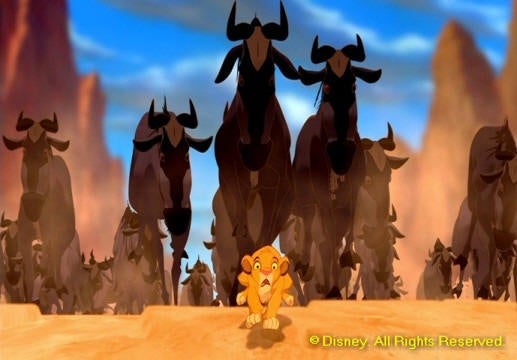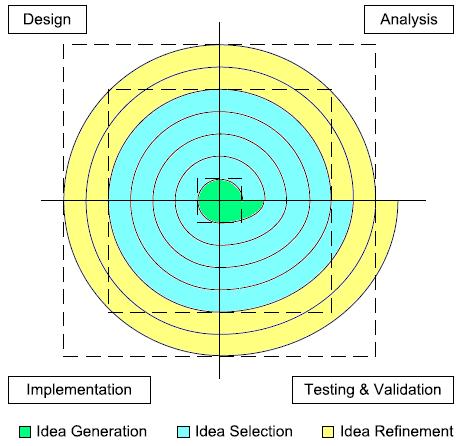Design team members: Cindy Chu, Steven Wang and Linda Wu
Supervisor: Liwana Bringelson

Background
Since the opening of the first Disneyland theme park in Anaheim, California, Walt Disney Parks and Resorts has become more than just an amusement park for children. They provide a complete family experience where young and old can share their dreams, and experience the magic and imagination.
To promote creativity, diversity, and innovation, Disney Parks and Resorts created the Imagi-Nations University Design Competition in 2001. This competition aims to encourage students to utilize their creativity and imagination, along with strong design skills to bring forth new entertainment experiences and attractions to the Parks and Resorts. Being passionate about bringing together creative design and engineering, Team Disney hopes to further enrich the Disney experience for guests by entering in this competition.
The team started of brainstorming possible ideas, and through the use of engineering techniques and design processes, the team was able to narrow down from one hundred sixteen ideas to one final idea - Lion King Bumper Boat Race.
Project description
Let the ride begin...
Entering the dimly lit valley passage where the story takes place, you will be brought to a screening room. With the occasional rumbling sounds in the background, you will be introduced to the story of the ride and its main character Simba.
Simba has just arrived at a stream within the valley and is having a drink of water. There are a herd of wildebeests upstream from him, who has also come to drink and rest. Suddenly, a group of hyenas appear. The alarmed wildebeests desperately attempts to escape from danger by running down the valley towards Simba’s the direction. Feeling the rumblings on ground from the stampede, Simba is aware of to the oncoming danger. As Simba looks in the direction of the herd, he realizes there are no alternative paths of escape but to outrun the wildebeests down the stream. Without his father, Mufasa, to save him, it is time for him to confront his own fears in order to arrive at safety. Your goal is to aid Simba in escaping from the oncoming wildebeest stampede.
You and your partner will be racing against the rest of the group in a bumper boat. The boats will be designed in such a way that from inside the boat, it is viewed as if the riders are Simba, while from the outside it is viewed by the others as a wildebeest. The objective of the ride is to navigate the bumper boat through the valley stream, heading toward the valley opening at the end. Along the way, obstacles will be encountered due to the herd’s stampede or from the force of nature. Fallen rocks, water volcanoes, crossing water currents and geysers are just a few examples. Despite the numerous obstacles, you still want to complete the race as fast as possible. Completion time of each boat will be shown at the end so you do not want to lose to your buddies!
Upon completion of the ride and having accomplished the goal of helping Simba reach safety, you will be led into a second screening room. Here you will be presented with a personal message from Simba, thanking you for helping him reach safety, as well as for helping him confront his deepest fears.
Design methodology
Using a User-Centred Design (UCD) spiral lifecycle approach of analysis, design, implementation, and testing and validation, the project was defined into three main phases: idea generation, idea selection, and idea refinement. There was one cycle in idea generation, four short cycles in idea selection and two full cycles in idea refinement phase. This information and additional details on the design methodology is presented in the figure and descriptions below.

Idea generation
- Research into Disney Parks and Resorts was performed to capture goals, needs and requirements
- An Interactive Systems Problem Statement (ISPS) approach was used to identify key components of the design such as human interaction and user support
- Created general criteria and constraints to outlined important requirements and to keep brainstorming within the scope of the project
- 116 ideas were created as a result of several brainstorming sessions
Idea selection
- Revisited ISPS to identified key components of the design according to the goals and requirements of the Imagi-Nations Competition
- Used criteria and constraints to help eliminated small and random ideas and to focus only on the main ideas
- Created weighing factors for criteria to be used as a guideline in evaluating ideas
- Personas were used to focus on the user's needs and expectation
- Used concept screening methods, including criteria and constraints, personas and weighing factors, to narrow down to one final idea
Idea refinement
- Revised ISPS, criteria and constraints to focus on the design of the actual idea and to stay within reasonable scope for the project
- Finalized story and designed physical aspects of the ride
- Technical engineering design decisions were made based on literature data
- Constructed prototypes and questionnaires for user testing so that the design can be evaluated from the user's point of view